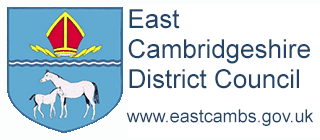Post date:
Reference:
Biodiversity should increase with each new development that takes place in East Cambridgeshire, after councillors agreed a new working document to help double land for nature.
As part of its plan to reverse the decline in the natural environment, the Council is requiring developers to demonstrate how the overall level of biodiversity at each development site will be increased after the development has taken place. If developers can’t achieve it on-site, then they will be required to look at boosting land for nature elsewhere in the neighbourhood.
This will be achieved by the creation, restoration and enhancement of habitats such as woodland, grassland, ponds, floodplains or meadows.
The council unanimously adopted its working document: Biodiversity Net Gain: East Cambridgeshire at the Finance and Assets committee on 24 November. It comes ahead of a national policy to make this mandatory from Autumn 2023.
The idea is that biodiversity will be in a measurably better state after new development has happened than before it has taken place. If a developer wants to build new homes on a parcel of land, they will need to calculate what level of biodiversity exists before development takes place, and then demonstrate how habitats will be created to increase biodiversity after the development has finished.
This does not necessarily mean the same type of habitats are created as currently exist, or created in exactly the same place. It’s about an overall increase in biodiversity.
Preference is to deliver biodiversity net gain (BGN) onsite, but failing this developers will have the hierarchal option of providing BNG elsewhere, such as on land near the development site or potentially in one of the nine priority landscaped areas identified in East Cambridgeshire;
Cllr David Brown, chair of East Cambridgeshire District Council’s finance and assets committee, said: “East Cambridgeshire District Council is committed to boosting the local natural environment throughout the district, and beyond.
“Just 5.5 per cent of the land in Cambridgeshire and Peterborough is covered by priority habitats, natural green spaces and designated nature conservation sites.
“This document will provide the starting point for a long-term vision of reversing nature decline in our district, and commence the journey towards a thriving natural environment, for the benefit of everyone.”
For very small applications, such as house extensions, the detailed provisions of this policy will not apply, but it is still encouraged that an element of biodiversity gain should be incorporated, such as fitting bird boxes, insect ‘hotels’, bee blocks, bat boxes and/or hibernation holes.
